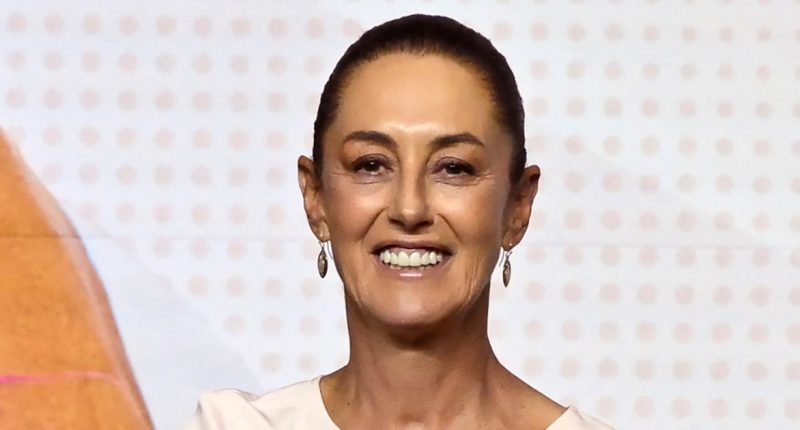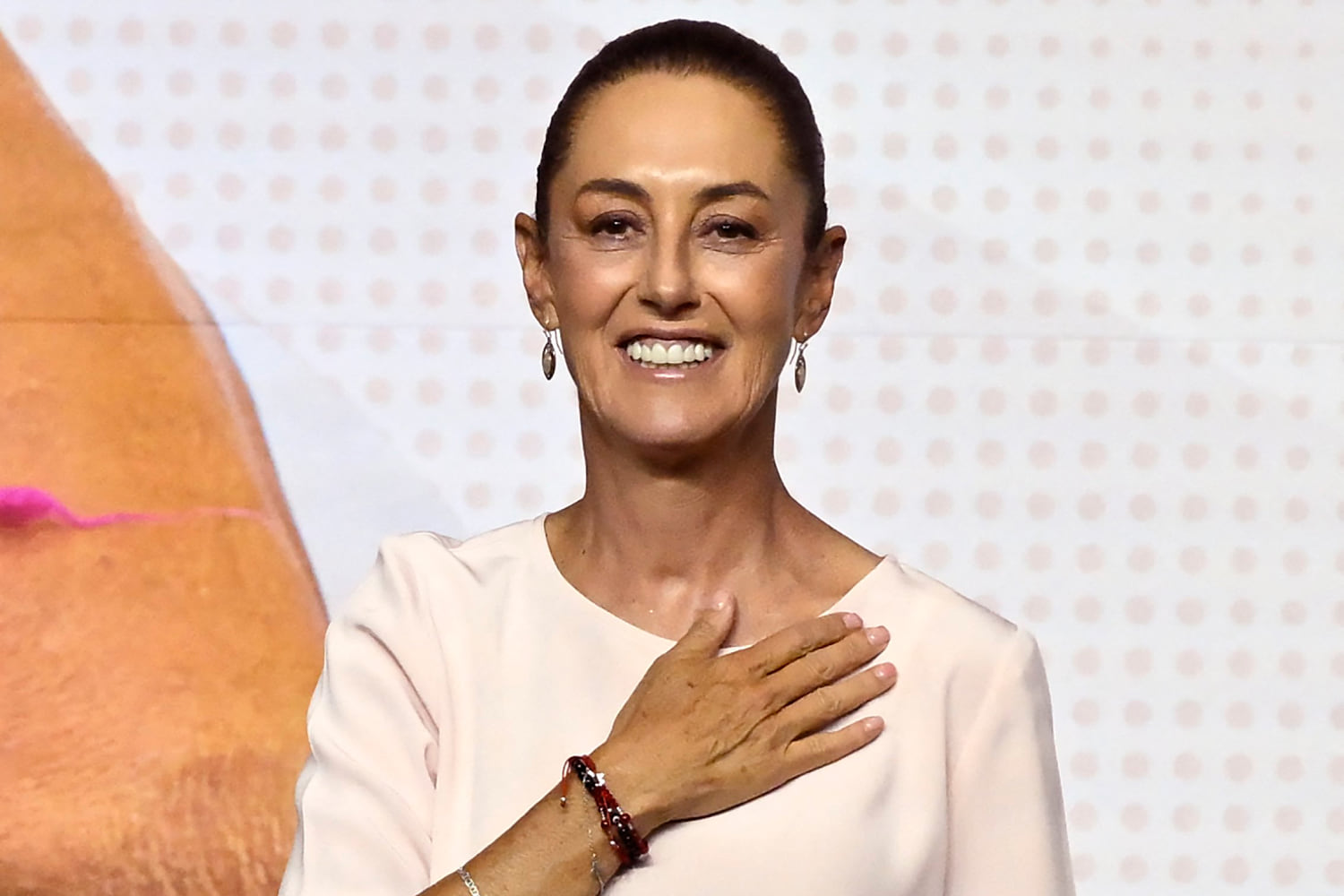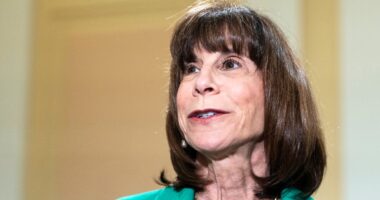
That is because as many countries move away from the burning of fossil fuels like oil and gas, which cause climate change, President Andrés Manuel López Obrador, one of Mexico’s most popular leaders in generations, has moved his country in the opposite direction.
Sheinbaum is often seen as the mentee of López Obrador, who is restricted by law to one term. As president, he has pumped billions of dollars into Mexico’s indebted state oil company and has been pushing an overhaul of the country’s energy sector that has boosted fossil fuel production and stymied investment in renewable energy projects. That has resulted in Sheinbaum, who until last June was Mexico City’s mayor, having largely gone quiet on global warming in Mexico, the world’s 11th-largest oil producer.
At the heart of her silence appears to be the conundrum facing many leaders in the face of climate change: should they sacrifice immediate political and economic needs to grapple with the longer-term changes necessary for human survival?
Sheinbaum has told The Associated Press that she believes in science, technology and renewable energy but also has said that if she wins she would continue increasing power generation by state-owned companies, which often run power plants with oil and coal.
Her main opponent, Xóchitl Gálvez, a former opposition senator, has said she would promote private investment in the energy sector, if elected. The businesswoman has promised to permanently close refineries in Nuevo Leon and Tamaulipas states within the first six months of her presidency, and has proposed transforming the country’s state-run oil and gas company into one that could also produce electricity using renewable sources such as geothermal energy.
Whoever wins will be the first female president of Mexico.
Water shortages
As the election approaches, a worsening water crisis is making it harder for Sheinbaum and her main opponent to ignore Mexico’s climate threats.
Sprawling Mexico City gets its water from overtapped underground aquifers and a vast network of canals, dams and reservoirs called the Cutzamala System. Persistent drought intensified by climate change and El Niño has drawn the system to record lows.
Neighborhoods not connected to the system are feeling the pinch of hot temperatures and delayed water deliveries by trucks. Laundromats have gone weeks without water and shortages have even hit restaurants and businesses in affluent neighborhoods like Polanco, sometimes called the “Beverly Hills of Mexico.”
In Xochimilco in the city’s south, Ana Maria Sandoval worries about how much worse the water cuts will get and what her 10-year-old grandson will face someday because of climate change.
But she has some hope for Sheinbaum, who belongs to López Obrador’s Morena party.
“I think she’s going to do something,” Sandoval said. “I’m going to vote for her to see if she follows through and at least helps us store rainwater.”
López Obrador’s fossil fuel agenda
Under López Obrador, Mexico has prioritized fossil fuel production in a quest to nationalize power generation in a country still deeply dependent on fuel imports. That’s exemplified by his flagship — still not operational — Olmeca oil refinery located just 50 miles west (80 kilometers) of the mostly disappeared town of El Bosque in Tabasco.
López Obrador’s government also purchased a refinery in Texas and passed legislation — part of which Mexico’s Supreme Court recently struck down — to limit how much electricity private gas and renewable energy facilities can sell. The policy would have favored the state-owned electrical power company over private power firms.
When confronted about his administration’s environmental record, López Obrador has pointed to hydroelectric plants that have been renovated, his oft-questioned reforestation program and a solar energy project in the state of Sonora, among others.
At a White House climate summit last year, López Obrador listed his administration’s efforts to address climate change, telling world leaders that “next year, we will be fulfilling the commitment to produce more clean and renewable energies in our country.”
Yet scientists at Climate Action Tracker, a group that scrutinizes nations’ pledges to reduce emissions, have criticized Mexico’s backtracking on its already modest climate targets, downgrading its rating in 2021 and 2022 to “critically insufficient,” the lowest level.
Sheinbaum’s campaign
Sheinbaum has said she supports the president’s goal of keeping 54% of Mexico’s electricity generation under state control, a vision that effectively casts aside more renewable energy production in favor of dirtier fuels.
But there are also some indications that Sheinbaum could take a more science-driven approach than her predecessor. Many point to her performance as mayor of Mexico City during the coronavirus pandemic for clues.
As mayor, Sheinbaum emphasized mask-wearing, testing and vaccination while López Obrador often minimized the dangers of the virus that ravaged Mexico.
Decades prior, Sheinbaum worked on plans to measure Mexico City’s air pollution. As mayor, she boosted the city’s public electro-mobility and cycling infrastructure, and initiated a large solar power park on the rooftops of a major wholesale market.
As for water, Sheinbaum has repeatedly said that Mexico needs a 30-year plan, an idea she has reiterated on the campaign trail. She recently laid out a plan in which she said her administration would prioritize better measuring water use in Mexico across sectors, especially agriculture, which uses the vast majority of the country’s water. But the plan was light on details about how her government would do so.
In Iztapalapa, a borough of Mexico City with almost 2 million people, Juana Acosta and Jose Luis Perez recently waited 15 days, a week longer than usual, for a water delivery. Residents of the poor, dense borough aren’t new to water problems, but residents like Acosta said they are getting worse. She has complained of longer wait times and stricter rationing due largely to shortages and higher demand.
“They didn’t used to leave us like this for a long time without water,” Acosta said.
Source: | This article originally belongs to Nbcnews.com










